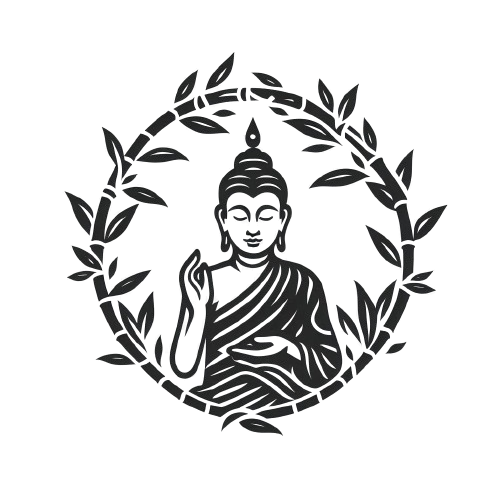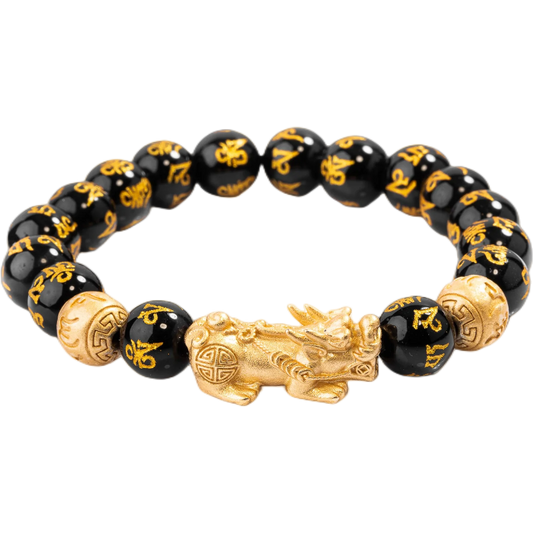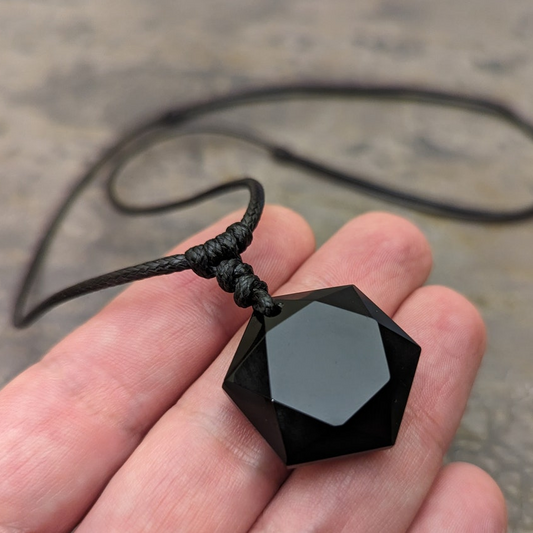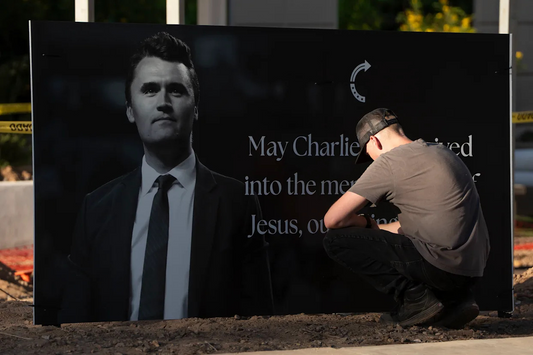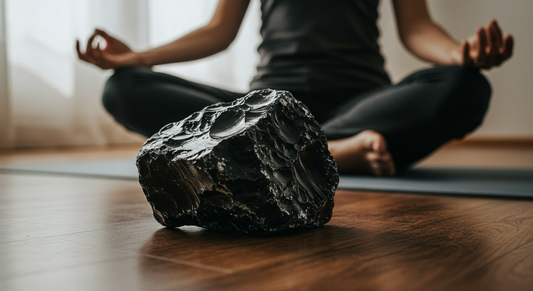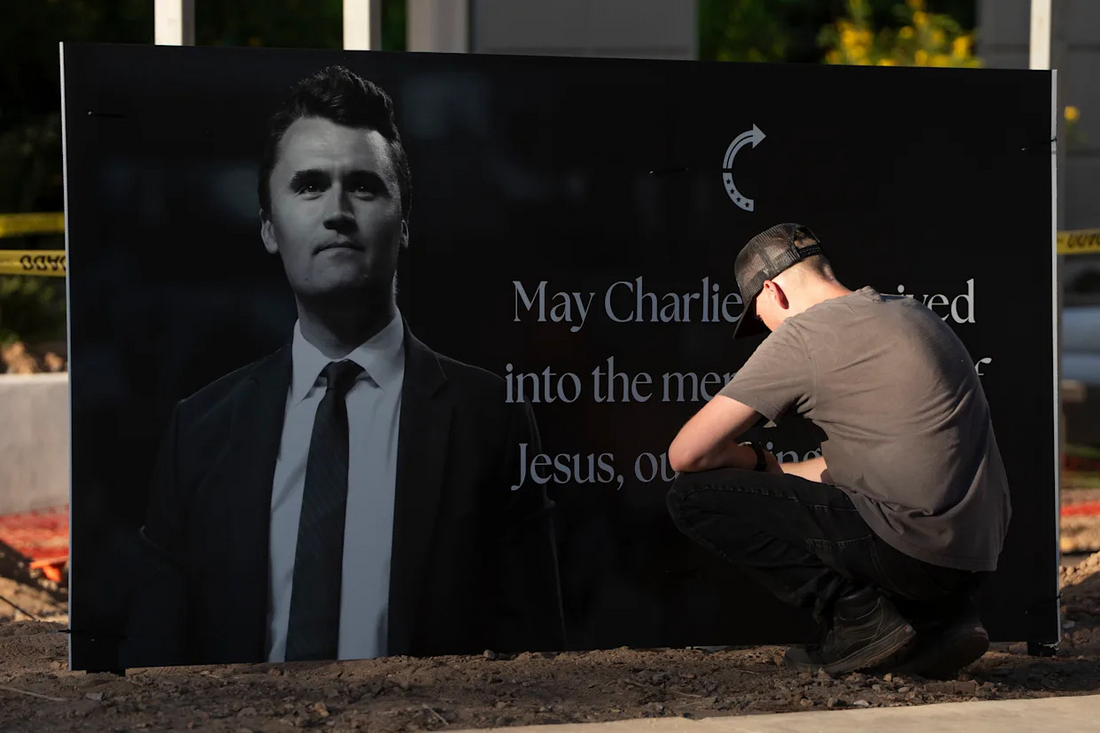
Charlie Kirk Is Dead — But Was It Bad Feng Shui?
Share
![]() By Amara Lee | Published: Sep. 11,
By Amara Lee | Published: Sep. 11,
- The Facts (And A Careful Note)
- A Quick Feng Shui Translation: What Does “Bad Chi” Even Mean Here?
- If Feng Shui Had A Security Checklist — Reading The Scene
- Symbolic Armor: What Elements Help “Stabilize” Chi
- Supporting Players: Trump’s Feng Shui Overlaps, And Odd Cultural Cousins
- Closing — A Careful, Practical Note
1. The Facts (And A Careful Note)
Note: Out of respect for the victims and their families, this piece avoids graphic detail. It is a feng shui–inflected, slightly satirical meditation on symbolic protection——not an explanation for a real-world crime. Facts about the event are cited below.
On September 10, 2025, conservative activist Charlie Kirk was fatally shot while speaking at an outdoor event at Utah Valley University. The attack—reported to have come from a rooftop vantage—happened roughly twenty minutes into his talk; thousands were in attendance, and authorities immediately launched a manhunt as federal investigators joined the probe.

2. A Quick Feng Shui Translation: What Does “Bad Chi” Even Mean Here?
If you read feng shui literally, the universe seems to have a sense of irony. If you read it figuratively, it offers spatial rules and symbolic remedies people use to feel safer. In feng shui, Chi (氣) refers to the flow of energy in a person’s environment. When that flow is “bad”—blocked, turbulent, or directed toward a person in a harmful way—practitioners often call it sha chi (煞氣). Looking through traditional principles, elements like exposed positions without solid backing, chaotic crowd energy, and sharp sightlines can generate this “bad chi.” Carrying symbolic protective items or arranging space wisely can help stabilize energy and provide a sense of preparedness—even if only psychologically.

3. If Feng Shui Had A Security Checklist — Reading The Scene
Let’s translate a few concrete details of the incident into feng shui terms, using widely taught principles (command position, poison arrows/sha chi, and elemental balance).
1. Outdoor stage + exposed back = missing “command” and “support.”
In feng shui, a person in the command position should be able to see the room’s main entrance and ideally have a solid backing (a wall, a “mountain” in classical terms) to symbolize support and protection. A raised outdoor stage facing an open crowd often places the speaker with a very exposed back and a limited, panoramic field of view. That’s exactly the opposite of the safe command position: exposed backs and unpredictable entrances create psychological vulnerability and, in feng shui terms, invite unstable chi. Practical feng shui texts advise placing key furniture (or people) so they can see doors and have a solid support behind them.
2. Rooftop shooter = “poison arrow” from above.
One common feng shui hazard is the poison arrow (or sharply directed sha chi): straight lines, pointed edges, or architectural features that aim energy at a person or building. A sniper firing from an elevated, linear vantage—rooftop cornices, rooflines and sightlines forming a direct, high-speed channel toward the speaker—maps cleanly onto that concept. Feng shui remedies for poison arrows typically center on breaking or deflecting the straight-line energy (plants, faceted crystals, screens or architectural softening) so “attack” lines don’t focus on a living area. Interpreting an actual gunshot this way is metaphorical, but the visual is uncomfortably literal.

3. Large, chaotic crowd = turbulent chi.
Crowds create turbulence: competing human energies, shouting, rapid movement. Feng shui emphasizes smooth chi flow and warns against clutter and congestion that block healthy circulation. In event planning terms, too many unchanneled entrances and exits, poor sightlines, and no clear backstage support create stressors that, beyond symbolic language, also reduce response times and situational awareness.
4. Lack of solid “mountain” support (no protective backdrop, porous perimeter).
In classical geomancy, a building or person should have a “mountain” or backing to anchor them — a solid wall, hillside, or structural support. Outdoor events with attendees on all sides and elevated access points lack that anchoring. In feng shui language: the speaker was standing on a floating islet without a mountain. Practically: event staging lacks a controlled rear perimeter; symbolically: it lacks support.
Put together, modern security and classical feng shui converge on simple, practical actions: reduce exposed backs, control elevated sightlines, harden and check perimeters, and create calming, stabilizing routines for the person at the podium. Feng shui’s vocabulary may be metaphoric, but its “checklist” overlaps with sensible event-risk plumbing: fewer blind spots, controlled sightlines, and structural support.
4. Symbolic Armor: What Elements Help “Stabilize” Chi (And Why People Carry Them)
People often wear objects not because the stone will stop a bullet, but because ritualized objects anchor attention, steady breathing, and provide a visible signal of preparedness. In feng shui language these are defensive elements—stones and metals that absorb or redirect hostile energy, and scents that calm the nervous system.
- Grounding/absorption: Black Obsidian is classically described as an absorbing, protective stone. As a talisman it stands in for a boundary: it’s a visual and tactile cue that you’re centered. Consider the idea of a hexagram pendant worn at chest level as symbolic armor: a heart-level “shield” aligns with the feng shui idea of protecting one’s center.
Black Obsidian Hexagram Necklace for Protection and Enlightenment
Black Obsidian Feng Shui Pixiu Bracelet
- Metal + grounding pairings: In Five-Element thinking, metal conveys cutting clarity and structural protection. A metal-accented obsidian bracelet mutes turbulent energy with a stabilizing axis—physically, it’s a discreet accessory; symbolically, it’s a wearable reinforcement.
Feng Shui Black Obsidian Bracelet With Antique Copper - For Protection and Wealth
- Aromatics to steady nerves: Sandalwood and similar scents are used to calm breath and posture before a performance; the ritual of a bead or a quick inhalation is both a centering action and a public signal of ritual.
Sandalwood Beaded Bracelet - Promote Health

The point is not to promise miracles; it is to note that humans use objects to make the intangible tangible. In high-pressure situations a small ritual or talisman can literally change cortisol levels and the way an audience reads a person on stage. That’s Feng Shui Lite—not a security system, but a psychological stabilizer.
5. Supporting Players: Trump’s Feng Shui Overlaps, And Odd Cultural Cousins
Feng shui isn’t only practiced in East Asia; Western celebrities and power brokers have long treated it as design psychology or good luck. Donald Trump famously consulted feng shui experts for real estate and image projects—reporters have documented feng shui consultants working on Trump Tower renovations and design choices intended to appeal to buyers and to “balance” a building’s presence.
That overlap—political theater plus spatial ritual—creates a weirdly American blend: image-conscious leaders who also tolerate boutique superstition. Other American public figures have publicly engaged with feng shui ideas or invited consultants (Oprah has featured feng shui content in her lifestyle mix; a broader list of celebrities has at times been reported to consult geomancers.) Even back in the 1990s, feng shui was influencing real estate and business in the U.S., as noted in Feng Shui Is Reputed to Create a Positive Energy Flow (LA Times). These anecdotes show a persistent desire among the famous to combine optics, comfort, and ritual.
Why mention this? Because the same psychology that makes a CEO hire a consultant or a celebrity redecorate a house can make a speaker slip on a talisman before a Q&A. It’s not that proponents expect gemstones to alter ballistics; it’s that rituals and objects give a person a little more courage, a visible identity, and a narrative: “I’m anchored. I’ve prepared.” That narrative can change posture, tone, and the dynamics of a crowd—soft behavioral variables that actually matter.
6. Closing — A Careful, Practical Note
Talking about “bad chi” after a real assassination risks sounding glib. So let’s end plainly: feng shui offers metaphors and small, psychologically effective rituals; it is not a replacement for serious security planning, perimeter control, or law enforcement. In the case of Utah Valley University, the lethal failure was a combination of violence and vulnerability—something that calls for policy, planning, and public conversation, not just amulets.
If you’re interested in symbolic protection for yourself (or simply in jewelry with a story), the pieces referenced above—Black Obsidian Hexagram, Feng Shui Black Obsidian With Antique Copper, and Sandalwood Beaded Health Bracelet—are the sort of objects people pick up when they want a ritual anchor. But real prevention means better crowd control, checked sightlines, and a world where political speech doesn’t risk a life.
If this story moved you, consider supporting verified relief efforts for victims and campus safety initiatives while reflecting on how symbol, design, and policy can either leave us exposed — or help protect us.

